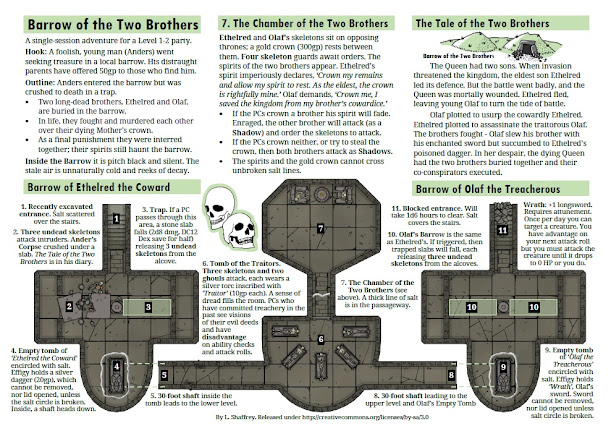Creating localized RPG weather using a simple Markov Chain - an example of a foggy swamp (Markov Chain Weather Part 3)
The weather can vary a lot from one location to another. For example, fog can form in a swampy valley even when the surrounding hills are clear. Similarly, precipitation in a mountain range is more likely to fall as snow and winds will be stronger. I’ve previously posted about using a simple Markov Chain to generate mid-latitude RPG weather that has realistic time variations. This post describes an extended Markov Chain method to produce weather that also varies from location to location.
 |
| Photo by Shubhayu69 (CC-SA 4.0) |
Another characteristic of fog is that it tends to occur during regimes of "Settled" weather, for example during a blocking anticyclone when the winds are calmer. If the wind is too strong, then the fog tends to get blown away. Furthermore, regimes of Settled weather tend to last for a few days, so we need an RPG weather method that can model this. This is where the Markov Chain comes in.
The Markov Chain method expands on the idea of the weather flipping between “Settled” and “Unsettled” regimes. To determine the weather, first roll to see if the weather regime remains Settled or Unsettled, or if it flips to the other weather regime. There is then a second roll to determine the weather type, which depends upon on whether the PCs are in the swamp or in the surrounding hill or forest hexes. The second roll is done once per day during an Unsettled weather regime to mimic the passage of storms and weather fronts. During a Settled regime only one roll is made for the weather type, which then persists until the weather flips to the Unsettled regime again.
Random Markov Chain weather tables for a foggy swamp and surrounding hill and forest hexes
Travelling into and out of the swamp
Should the PCs move into or out of the swamp, then weather type changes according to the terrain. For example, the PCs are in a Forest hex at the start of the day, the weather regime is settled and the weather type is "Morning Fog and Cool". If the PCs move into a Swamp hex during the day then the weather type becomes "Foggy and Cool".
Fog and Visibility Effects
- Clear: Navigation as normal.
- Cloudy: Cannot navigate using distant landmarks.
- Fog: Conditions are Lightly Obscured (DMG p110); Cannot spot and/or navigate using distant landmarks; Encounter starting distances halved.
Different types of weather using Markov Chains
I'm using the example of a foggy swamp as an illustration, but hopefully the explanation is clear enough that the method can be adapted to include other types of localized weather, for example, the colder weather found in a mountain range, or even magical or fantastical weather that is locally generated. Just a final note that Markov Chains are really flexible. For example, you can find on my blog another post about using Markov Chains to generate random RPG weather for post-apocalyptic or hell-like settings.
A pdf describing this method can be found here.






Comments
Post a Comment